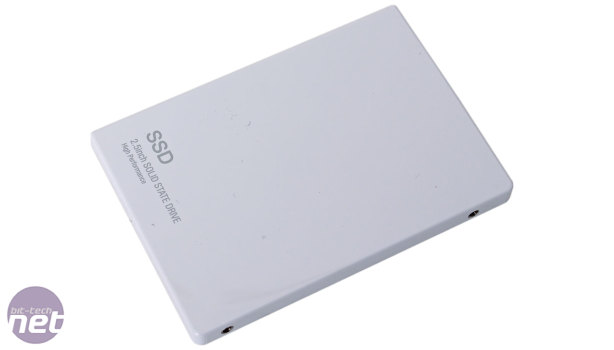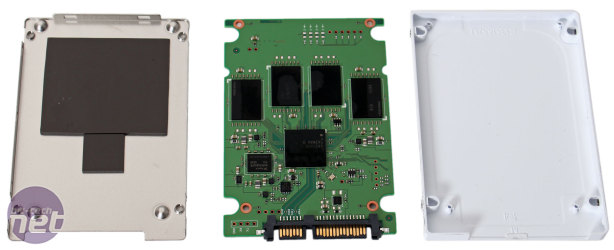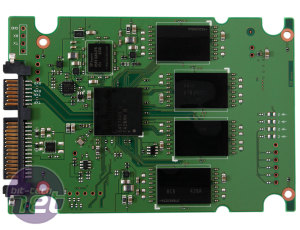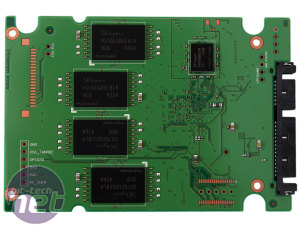
SK Hynix SH910A SSD 256GB Review
Manufacturer: SK HynixUK price (as reviewed): £84.99 (inc VAT)
US price (as reviewed): Currently unavailable
Given that SK Hynix is the sixth-largest semiconductor company in the world and the world's second-largest producer of DRAM and flash memory (beaten only by Samsung here), it may surprise you to know that the company has virtually no presence in the SSD market beyond the OEM space. At least, that is, until now, as the semiconductor giant has just begun its first real foray into the consumer SSD market. It's certainly a little late to the party, but SK Hynix is also backed by experience, vast sums of money and the ability to produce all the main components of an SSD in-house, something which has given players like Samsung and Crucial a clear advantage in the field.
The SH910A range will be available in capacities from 64GB to 512GB (though the larger one is still absent from retailers) for 2.5-inch models and in 32GB to 128GB for mSATA users. It appears to be based on the OEM SH920 SSD line found in various notebooks.
The 256GB model, which is the capacity we consider to now be the mainstay of enthusiasts, comes in at a very attractive £85, which works out to just 36p per formatted GB. This means SK Hynix is very much aiming for entry-level users rather than professionals, which in turn means that like so many other drives the SH910A will have to do battle with Crucial's MX100 and Samsung's SSD 840 EVO, which come in at just £75 for 256GB and £84 for 250GB. As such, the new SK Hynix model certainly has its work cut out for it, as these two drives combine have solid performance (for client usage models) and impressive features too.
| SK Hynix SH910A SSD | 64GB | 128GB | 256GB | 512GB |
| Max Sequential Read (MB/sec) | 525 | 530 | 530 | 530 |
| Max Sequential Write (MB/sec) | 180 | 330 | 410 | 410 |
| Max Random Read - 4K QD32 (IOPS) | 70,000 | 94,000 | 94,000 | 94,000 |
| Max Random Write - 4K QD32 (IOPS) | 40,000 | 71,000 | 75,000 | 76,000 |
The retail-packaged SH910A comes with a 3.5-inch adaptor bracket as well as SATA power and data cables. The drive itself is very sleek, with a glossy, all-white exterior.
The basic performance specifications naturally aren't as high as professional level drives, hence the sub-500MB/sec sequential write speeds, but they are still solid for an entry-level drive. Sequential write speeds, at 410MB/sec, are actually rated at 80MB/sec higher than the Crucial MX100 256GB.
We rarely see SK Hynix NAND flash used in consumer SSDs – most companies opt for Toshiba or Micron solutions, while SanDisk and Samsung both produce their own. In the SH910A, Hynix uses its own F20 20nm MLC NAND, and each individual die can hold 64Gb of data. Hynix uses no additional overprovisioning with the SH910A, hence the advertised 256GB capacity. Annoyingly, and endurance rating in terabytes written has not been issued, but the drive does come with a three year warranty – standard for the entry-level market.
The controller comes courtesy of Link_A_Media, or LAMD, a company that Hynix acquired in 2012. Specifically, the model used is the LM87800AA, the same as that in the Corsair Neutron GTX, and LAMD's first consumer-oriented solution. It's odd that a newer model hasn't been produced since, but if Hynix is able to use its deep knowledge of the controller and its own NAND to produce solid firmware, then it may not matter. The controller is an eight-channel design like the vast majority currently used in client SSDs, and it supports up to four dies per channel, so Hynix's use of 64Gb dies ensures maximum controller saturation, as you need 32 such dies to get to 256GB (there are four dies per NAND package on the PCB, and eight packages in total). It also means the 512GB version will use 128Gb dies.
As you'd expect, the DRAM cache is also of Hynix origin. There are two cache chips on the PCB, one on either side, and the model number, H5PS1G83JFR-Y5I tells us that each chip is a 128MB DDR2 module, for 256MB cache total. We're now used to seeing either low-power or DDR3 cache (or both), so the SH910A is a bit behind here – it's likely this is a limitation of the controller, which may not support low power modules or DDR3.
Despite the lack of a low-power cache, the SH910A does support the DEVSLP function, and as such is suitable for notebook users. Other features are absent though; even the level of encryption is unclear. We're assuming the drive features AES 256-bit encryption (very much a standard now) as the controller supports it, but we haven't been able to confirm this.
Specifications
Interface: SATA 6GbpsNominal capacity: 256GB
Formatted capacity: 238.47GiB
Controller: LAMD LM87800AA
Cache: 2 x SK Hynix 128MB DDR2
Memory type/amount: 64Gb SK Hynix F20 20nm MLC NAND dies (8 x 32GB packages)
Endurance rating: Not stated
Warranty: Three years

MSI MPG Velox 100R Chassis Review
October 14 2021 | 15:04












Want to comment? Please log in.